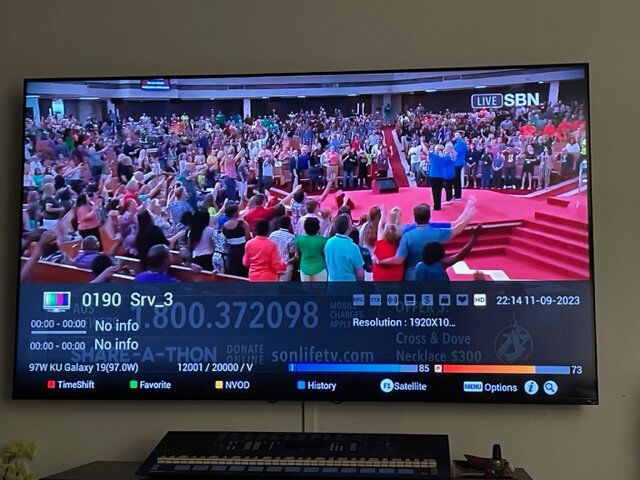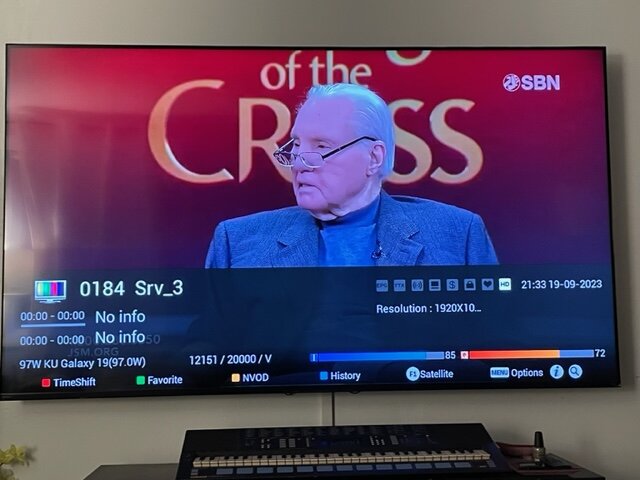Hi All,
I have Amiko A3 with 100cm dish, Universal LNB & Moteck SG-2100.
Before I installed motor my fixed setup was fine and I was getting Galaxy 19 with many channels.
After installing motor doing the setups (Lat=40.8, Long=74.2), I saw the the satellite closest to my true south is 75W KU Star One C3 (12427/10500/H), aimed at it and got some quality sig on it. But the signal was like some mexican channels (AMX, mexiquense, etc) which I think was actually satellite 77W (QuetzSat1), found by googling AMX and mexiquense. Then I moved the dish to 97W to get Galaxy 19. I got some signal here too (SBN, NHK World, and other chinese channels) and they look like coming from SES-1 101W.
Help pls, what am I doing wrong and how can I fix it? I attached some screen shots.
I have Amiko A3 with 100cm dish, Universal LNB & Moteck SG-2100.
Before I installed motor my fixed setup was fine and I was getting Galaxy 19 with many channels.
After installing motor doing the setups (Lat=40.8, Long=74.2), I saw the the satellite closest to my true south is 75W KU Star One C3 (12427/10500/H), aimed at it and got some quality sig on it. But the signal was like some mexican channels (AMX, mexiquense, etc) which I think was actually satellite 77W (QuetzSat1), found by googling AMX and mexiquense. Then I moved the dish to 97W to get Galaxy 19. I got some signal here too (SBN, NHK World, and other chinese channels) and they look like coming from SES-1 101W.
Help pls, what am I doing wrong and how can I fix it? I attached some screen shots.
Attachments
-
 IMG_2562.jpg146 KB · Views: 186
IMG_2562.jpg146 KB · Views: 186 -
 IMG_2563.jpg146.3 KB · Views: 181
IMG_2563.jpg146.3 KB · Views: 181 -
 IMG_2564.jpg120.8 KB · Views: 166
IMG_2564.jpg120.8 KB · Views: 166 -
 IMG_2566.jpg188.1 KB · Views: 174
IMG_2566.jpg188.1 KB · Views: 174 -
 IMG_2567.jpg126.8 KB · Views: 174
IMG_2567.jpg126.8 KB · Views: 174 -
 IMG_2573.jpg122.9 KB · Views: 164
IMG_2573.jpg122.9 KB · Views: 164 -
 IMG_2574.jpg104.7 KB · Views: 167
IMG_2574.jpg104.7 KB · Views: 167 -
 IMG_2652.jpg136.8 KB · Views: 168
IMG_2652.jpg136.8 KB · Views: 168 -
 IMG_2653.jpg114.3 KB · Views: 177
IMG_2653.jpg114.3 KB · Views: 177

